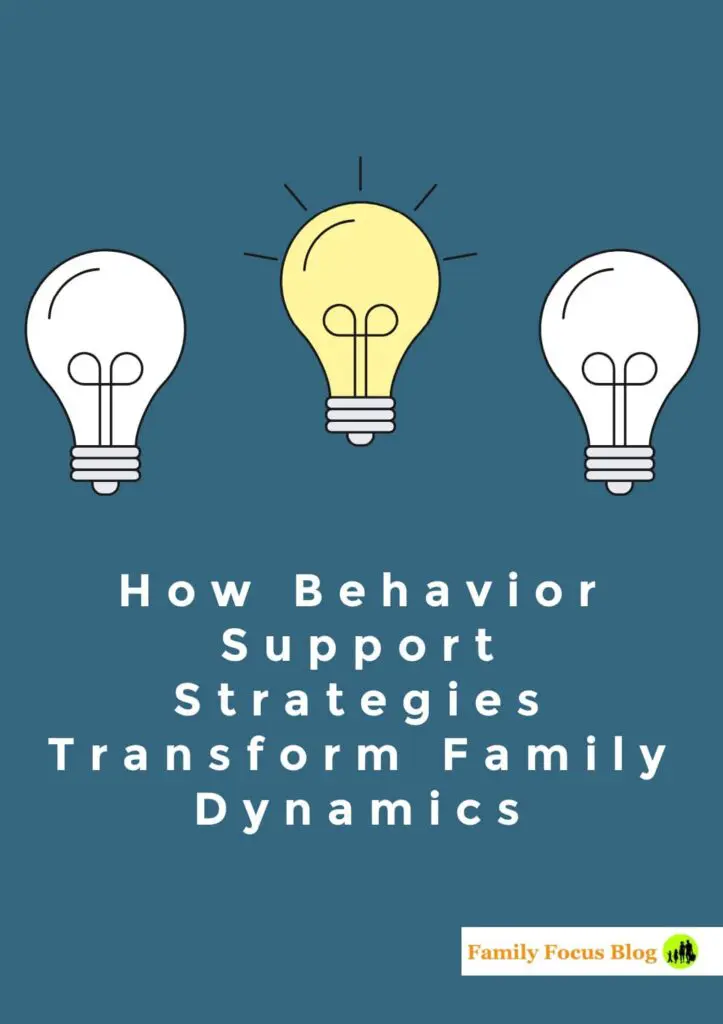Family life isn’t always smooth sailing. Some days feel like a whirlwind of frustration, miscommunication, and emotional overload, especially when challenging behaviors start to feel like battles. And it’s not just you. In 2023, nearly one in three parents rated their daily stress at the highest levels, compared to only 20% of adults without children. [1]
When the pressure builds, even simple routines can feel harder than they should be. But what if you had tools that didn’t just manage the chaos but actually improved the way your family connects? When used thoughtfully at home, positive behavior strategies can reshape routines and build stronger relationships. Behavior support strategies can help everyone feel more understood.

Understanding Behavior As Communication
When someone acts out or shuts down, it often comes from something deeper. Frustration, confusion, or unmet needs can show up as difficult behavior. You might see yelling, defiance, or even silence. But underneath, there’s usually a reason—and often, it’s a form of communication.
Get curious. Looking at behavior this way can change how you respond. Instead of trying to stop it in the moment, you start thinking about why it’s happening. That shift makes room for calmer reactions. This is where behavior support strategies can help, as they focus on patterns, not just outcomes. They guide you in how to respond in ways that are steady and clear.
Start with observation. Pay attention to nonverbal signals, patterns, and what seems to trigger the current behavior, then write it down if that helps. Over time, you’ll notice patterns that give you more clarity. From there, it becomes easier to respond in a way that brings everyone back on track.
Setting Boundaries That Actually Work
Boundaries are one of your best behavior support strategies. Transform Family DynamicsBoundaries matter at every age. They create structure, reduce stress, and help avoid power struggles. But for boundaries to work, they need to be clear and fair. When limits change every day, it can confuse the people around you, and lead to more pushbacks. That’s why it helps to align boundaries with age-appropriate behavioral expectations.
This is where parenting style plays a role. For example, a more permissive approach may struggle with follow-through, while a more authoritarian one can feel too rigid. Balance tends to happen somewhere in the middle, where boundaries are consistent but still respectful.
Say what the limit is, what will happen if it’s crossed, and follow through every time. When expectations stay the same, it’s easier for others to know what is expected and what comes next.
In a 2022 national survey, 45% of parents said they tend to be overprotective, and 35% admitted to giving in too quickly. Finding the right balance with boundaries isn’t always easy, but it doesn’t have to be complicated either. You don’t need long talks or emotional warnings. A calm tone and a clear message go a long way. [2]
Over time, this builds trust and makes the home feel more predictable for everyone. It also reduces unwanted behaviors and encourages the use of positive statements when giving direction.

Rebuilding Connection During Conflict
It’s easy to feel disconnected when emotions run high; it puts everyone on edge and shuts down communication. But even in those tough moments, there’s still room to reconnect. Instead of focusing only on the behavior, try leaning into the relationship. How can you repair and reconnect without dismissing the issue?
Sometimes, it’s as simple as taking a pause. Then return when you can talk without anger. Ask questions and keep your tone calm. This shows that you’re still present and still listening. Don’t underestimate small moments of connection. A responsive approach like this can prevent the cycle of repeated disruptive behavior and build trust.
A quiet sit on the couch, a shared laugh, or even just making eye contact after an argument can repair more than a long lecture ever could. Connection builds cooperation. When people feel emotionally safe, they’re far more likely to listen, adjust, and grow. That is why behavior support strategies can be so helpful in providing a safer way to get through the tough stuff.
Building communication skills in these moments also helps improve peer relationships, especially in younger children. When connection becomes the focus, conflict starts to feel less like damage and more like an opportunity to grow together.
Making Small Behavior Changes Part of Everyday Life
Behavior change doesn’t happen all at once. It’s built through practice, one change at a time, so start with what’s manageable. Maybe that’s a shorter morning routine, a new way to give reminders, or a new rule that keeps things on track.
Choose one thing and stick with it until it feels natural. In some homes, something as simple as creating a calming corner can offer a break before undesired behaviors escalate. Once that’s working, you can build from there.
Over time, the small changes add up. What felt difficult before starts to feel normal. The more your family sees the benefits, the more they’ll want to be part of the process, and even find joy in how much smoother things start to feel. As you go, use daily monitoring to see what’s helping and where additional intervention may be needed.
Don’t forget to involve the whole family. Invite input and talk openly about what’s working and what’s not. If you want to be heard, start by listening. Pay attention to what each person needs, and remember that your tone, posture, and silent signals often speak louder than your words. These moments also offer valuable time for children, which supports stronger bonds and better behavioral practices. [3]

Final Thoughts On Positive Behavioral Strategies
Looking for effective behavior support strategies? Key practices like setting clear expectations, staying calm during conflict, and using consistent behavioral interventions can help you create a calmer, more connected home. By understanding what’s behind certain behavior challenges, keeping limits steady, and using a positive behavior approach, you’ll start to see a difference.
You’ll likely still have hard days, but they won’t feel as overwhelming. Over time, these small shifts support stronger relationships, improve mental health, and help everyone feel more supported and understood.
References
- “What advice do psychologists have to offer on how parents can manage stress and burnout?,” Source: https://www.apa.org/topics/stress/parental-burnout
- “Parenting in America Today,” Source: https://www.pewresearch.org/social-trends/2023/01/24/parenting-in-america-today/
- “Tips to Improve Family Relationships,” Source: https://www.helpguide.org/mental-health/wellbeing/improving-family-relationships-with-emotional-intelligence
Related Posts:
Create Your Own Calming Cream with Essential Oils
Communication in Marriage: Unlocking the Secret to a Fulfilling Relationship

Kiana says
I really appreciate how you explained behavior support strategies in such a practical and compassionate way. As a parent, it’s so helpful to be reminded that positive guidance and consistency can make such a big difference. These kinds of tools really help create a calmer, more connected home environment. Thanks for sharing such valuable insights!
Rachel says
I love how you focused on proactive behavior support instead of just reacting to challenges. It’s a great reminder that kids thrive with structure, clear expectations, and lots of positive reinforcement. Thank you for these thoughtful and realistic parenting tips!
ss siri says
These positive behavioral strategies truly empower both parents and children. Consistency and empathy go a long way in building a peaceful and respectful home environment.
Godrej says
Your insights into behavior support strategies really hit home. Seeing behavior as communication and setting calm, consistent boundaries is such a powerful way to transform family dynamics.
Jacov Fernandes says
This really hits home. Family life can be overwhelming at times, and it’s comforting to know others feel the same. That’s one reason I love what I do— creating beautiful pieces that bring a little joy and self-care to busy parents. We all deserve small moments of calm and beauty in the chaos!
Mceach says
Insightful read! I appreciate how this article highlights the shift from reactive discipline to proactive behavioral support. Framing behavior as communication is a powerful lens that truly transforms family interactions and builds emotional resilience in both children and parents.
Meghan says
This article beautifully highlights how behavior support strategies can bring about positive change within a family. It’s amazing how small, consistent actions can reshape communication, reduce conflict, and strengthen relationships. A must-read for parents looking to create a more harmonious home environment!